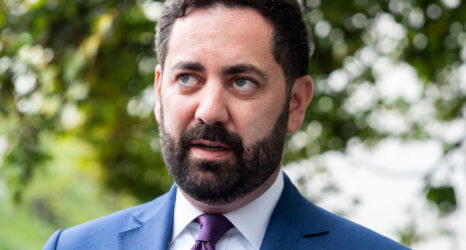
This Saturday, Jan. 22, we mark the 49th anniversary of Roe v. Wade, which ruled the Constitution protects a pregnant woman’s liberty to choose to have an abortion without excessive government restriction. Normally, anniversaries are a day to celebrate. But this Roe Day is a somber one.
In a few short months, we face the likelihood the Supreme Court will overturn Roe. Already, 2021 was the worst year for abortion rights in half a century. In Texas, abortion has already been virtually outlawed for almost five months. And now the Supreme Court has issued yet another decision that will ensure S.B. 8 will remain the law in Texas for months to come.
As these laws continue to make their way through the courts, every day they are in effect has a dramatic impact on real people. As explained in the 2016 Supreme Court decision in Whole Women’s Health and reiterated by Justice Sonia Sotomayor during the Dobbs hearing in December, abortion is 14 times safer than carrying a pregnancy to term—and abortion restrictions can lead to death in women even with a wanted pregnancy. If this really is Roe’s last anniversary, in a post-Roe world, pregnancy-related deaths will no doubt increase substantially.
In 1972, Ms. ran a bold petition in which well-known U.S. women declared they had undergone abortions—despite laws in many states rendering the procedure illegal. In 2006, Ms. issued a renewed call to stand up and speak truth to power. We know it is time again. One of the 2006 “We Have Had Abortions” petition signatories, actor Amy Brenneman, joined Michele Goodwin on the most recent episode of “On the Issues,” to reflect on Roe’s anniversary and to discuss her abortion story and how it led to her activism.
“I’ve had an abortion. I’ve used birth control. I’ve done in vitro fertilization and I have a special needs daughter. All of those are connected to choice and taking on what I feel like I can responsibly take on as a human and as a mother.”
The silver lining of this fraught era for reproductive rights seems to be that a large swath of Americans who oppose overturning Roe v. Wade will be motivated to vote in the midterm elections this fall. Polls show that abortion is increasingly becoming a decisive factor for voters—particularly young women voters.
Abortion bans have been labeled “the new Jane Crow,” for they “[ensure] a permanent underclass for pregnant women,” according to Lynn Paltrow of National Advocates for Pregnant Women. But we must not forget the original Jim Crow—the series of discriminatory laws that relegated Black Americans to second-class status—nor can we stop reckoning with its legacy. The Senate attempted to do exactly that this week, in an effort to advance the Freedom to Vote: John R. Lewis Act and revamp the filibuster. But ultimately, an anti-democracy bloc of Republican senators, joined by two Democrats, blocked both measures.
Of course, the way to truly protect reproductive freedom is twofold: Increase voter power and mobilization, and secure women’s full legal equality under the Constitution with the Equal Rights Amendment.
I know you’re frustrated. Me too. But we must remember the words of House Speaker Nancy Pelosi: “Don’t agonize. Organize.”
And you can start by adding your name to the “We Have Had Abortions” petition. Whether you yourself have had an abortion, or you are a supporter of abortion rights, know that your name and your voice will make a difference. And when you sign the petition, we ask that you help Ms. by promoting the petition to your friends, family and others across the country to join our fight to save abortion rights.
Up next:





